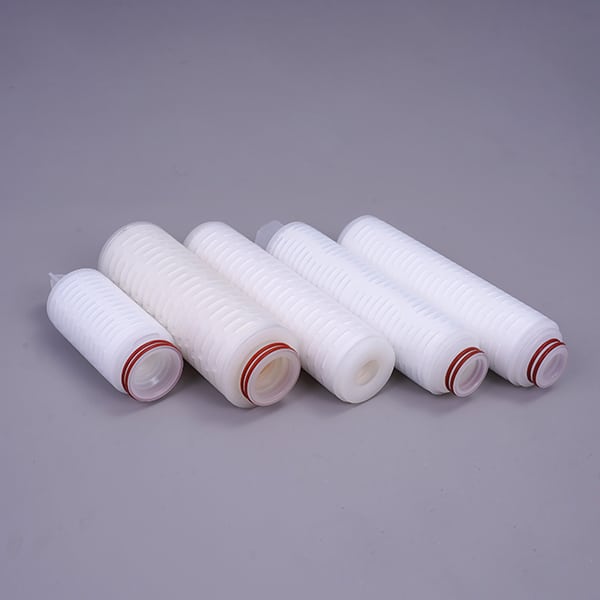
Understanding Liquid Filter Cartridge Types: Selecting the Right Filter for Your Needs
When it comes to liquid filtration, the choice of filter cartridge is crucial for ensuring optimal performance, whether you’re filtering water, chemicals, or other liquids. The various kinds of filter cartridges available can be overwhelming, but understanding their specific functions and applications helps you select the right one for your needs. In this article, we’ll explore the different types of liquid filter cartridges, their benefits, and which ones might best serve your filtration goals.
Types of Liquid Filter Cartridges
- Sediment Filters
Sediment filters are among the most common filter types and are typically the first line of defense in any filtration system. They remove suspended solids like dirt, rust, and sand from liquids. These filters come in various forms, such as:- Pleated Filters: Designed to maximize surface area, these filters capture large particles and can often be washed and reused.
- String-Wound Filters: These are more traditional filters made by winding string around a core, trapping debris as liquid passes through.
- Melt-Blown Filters: These are compact and better suited for capturing finer particles, as they are designed with dense areas for more effective filtration.
Sediment filters are ideal for pre-filtration in multi-stage systems, preventing larger particles from clogging finer filters downstream. However, they don’t filter out bacteria, viruses, or dissolved chemicals.
- Activated Carbon Filters
Activated carbon cartridges are widely used for removing organic compounds, chlorine, and bad odors from liquids. This makes them a popular choice in water filtration systems, as they significantly improve taste and remove harmful contaminants. Activated carbon filters:- Rely on adsorption, meaning they capture impurities by trapping them in porous surfaces.
- Are effective at eliminating unpleasant tastes, odors, and chlorine from water.
- Do not remove dissolved solids or bacteria, so they are often paired with other filter types.
Although these filters need frequent replacement, they remain a cost-effective solution for improving liquid quality.
- Ceramic Filters
Ceramic filter cartridges are one of the most effective natural filtration methods. These filters use small pores to trap bacteria and sediment, making them excellent for purifying water. Many ceramic filters are infused with silver to kill or inhibit bacterial growth, adding an extra layer of protection.- They are reusable and easy to clean, making them a sustainable choice.
- Though they remove bacteria, they cannot filter viruses or dissolved solids, so they are often part of a broader filtration system.
- Reverse Osmosis (RO) Filters
Reverse osmosis filters are some of the most effective filtration systems available, capable of removing particles as small as 0.001 microns. These filters use a semi-permeable membrane to remove contaminants like pesticides, heavy metals, nitrates, and more. RO filters are:- Highly effective at producing pure, clean water by eliminating up to 99.9% of contaminants.
- Known for their precision in removing dissolved solids, making them ideal for industrial or drinking water applications.
However, reverse osmosis systems also produce significant water waste and require frequent maintenance.
- Ultrafiltration (UF) Cartridges
Ultrafiltration cartridges work similarly to reverse osmosis, using membranes to remove fine particles down to 0.01 microns. These filters are particularly useful for eliminating bacteria, viruses, and proteins, making them suitable for medical or pharmaceutical uses.- They operate at lower pressures than reverse osmosis filters, making them more energy-efficient.
- However, UF filters are less effective at removing dissolved minerals, so they are typically part of a multi-stage filtration system.
- Chemical Filters
Chemical filter cartridges are designed to remove chemical contaminants like chlorine, fluorides, and pharmaceutical residues. These include:- Granular Activated Carbon (GAC) Filters: These filters have a large surface area for adsorption, making them highly effective at removing various chemicals from water.
- Carbon Block Filters: These have a denser structure compared to GAC filters, offering better chemical adsorption but at the cost of reduced water flow.
Choosing the Right Filter Cartridge for Your Application
The right liquid filter cartridge depends on the specific contaminants you’re looking to remove, the desired flow rate, and whether you need to filter solids, chemicals, or biological impurities. Here are a few considerations:
- For drinking water: Reverse osmosis or a combination of sediment and activated carbon filters is ideal. This system removes both solid particles and chemical impurities, producing pure, safe water.
- For industrial use: Ultrafiltration or chemical filters are better suited for removing specific contaminants, such as in pharmaceutical or chemical production.
- For whole-house filtration: A multi-stage system with sediment and carbon filters ensures broad-spectrum protection from particulates, chemicals, and microorganisms.
Conclusion
Selecting the right filter cartridge is critical to achieving the best filtration results. Whether you’re filtering drinking water, processing industrial liquids, or ensuring chemical-free water in your home, understanding the strengths and limitations of each filter type helps you make an informed decision. Depending on your needs, you may even want to combine several filter types to ensure the highest quality of filtered liquid.
With advancements in filtration technology and a wide variety of options available, it’s easier than ever to find a solution that meets your needs, whether you’re seeking better water taste or chemical-free purification.

